'Rare' medieval silver strap-end found in Roudham by detectorist
- Published
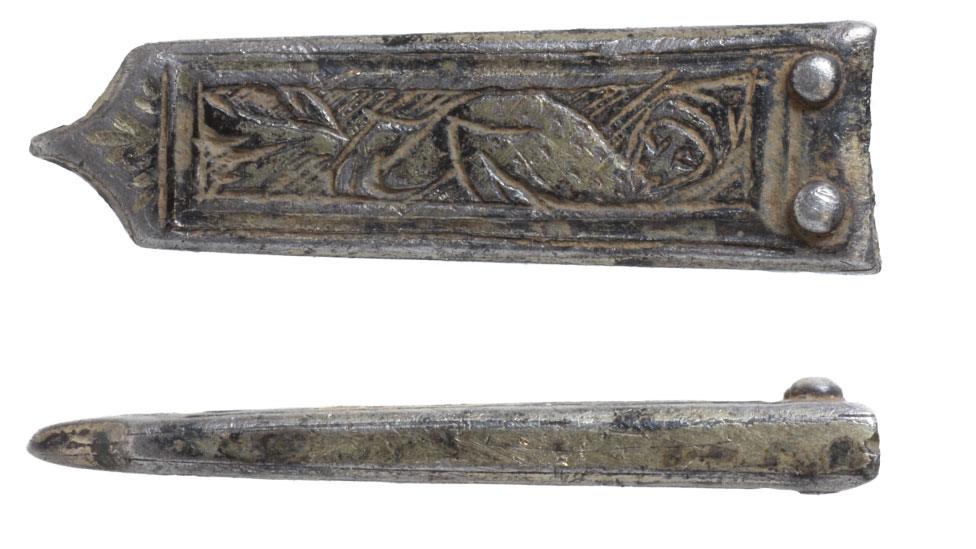
The chunky gilded-silver strap-end is engraved with a bird creature with a human head, wearing a hood or helmet
A late medieval gilded silver strap-end, engraved with an unusual bird design with a human head, is a "rare find", according to an historian.
A metal detectorist unearthed the object in September, in a field at Roudham, near Thetford, Norfolk.
The design may have come from medieval bestiaries, which were "the origin for JK Rowling's book Fantastic Beasts and Where to Find Them", said Helen Geake.
It was declared treasure by a coroner and a museum wished to acquire it.

Such designs are not common decorations on strap ends, said Helen Geake, Norfolk finds liaison officer
While Dr Geake believed the engraving was probably based on a mythical creature, it could have been based on a species its creator had heard about, but had never seen.
Such animals were found in bestiaries, which were illustrated books, external offering the most popular sources of information about animals, real or imaginary, during the Middle Ages.
Each illustration would have been accompanied by a short description, as well as by a moralising text.
"We know about animals because we've got David Attenborough," said Dr Geake, Norfolk finds liaison officer.
"Medieval people would have heard of lions or camels or the cockatrice - but wouldn't necessarily know what they looked like.
"And there's nothing to show people didn't know a cockatrice [a two-legged dragon with a rooster's head] was a real animal."
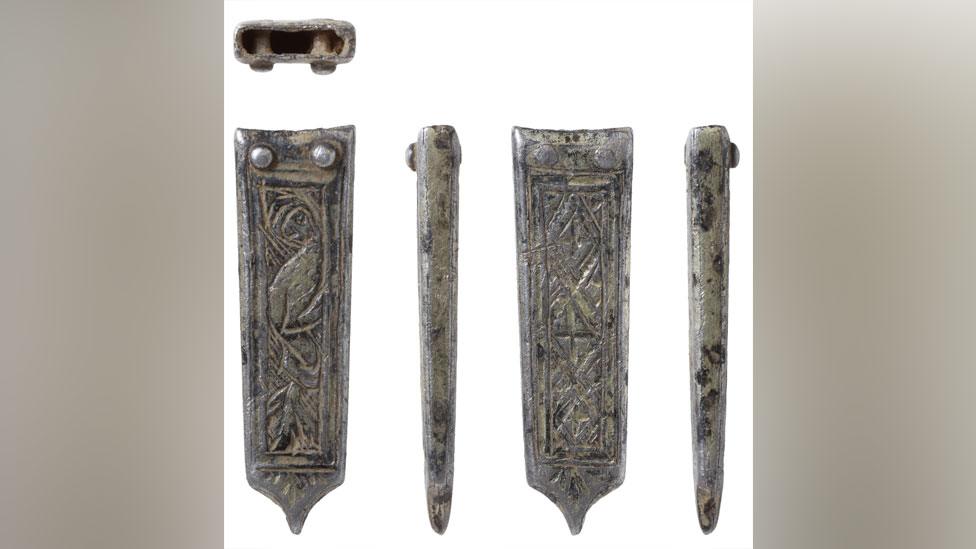
The chunky object is made from gilded silver so would have glinted like gold
The 27.7mm-long (1in) find dates to the late 14th or early 15th Century, a time of turmoil and social change in the wake of the Black Death.
More than 8,000 strap-ends have been reported to the Portable Antiquities database, external, but only 44 of them are made from silver, making it "a pretty rare find", said Dr Geake.
They were used to prevent the ends of long, fabric belts from fraying, while also weighing them down.
Dr Geake said: "This one is quite posh, it's small but very chunky, and it's gilded, so it would have looked like gold.
"So not owned by royalty, but it could well have belonged to someone at courtier level."

It lay hidden in a field near Thetford for more than 600 years

Follow East of England news on Facebook, external, Instagram, external and X, external. Got a story? Email eastofenglandnews@bbc.co.uk, external or WhatsApp 0800 169 1830
Related topics
- Published11 February 2024
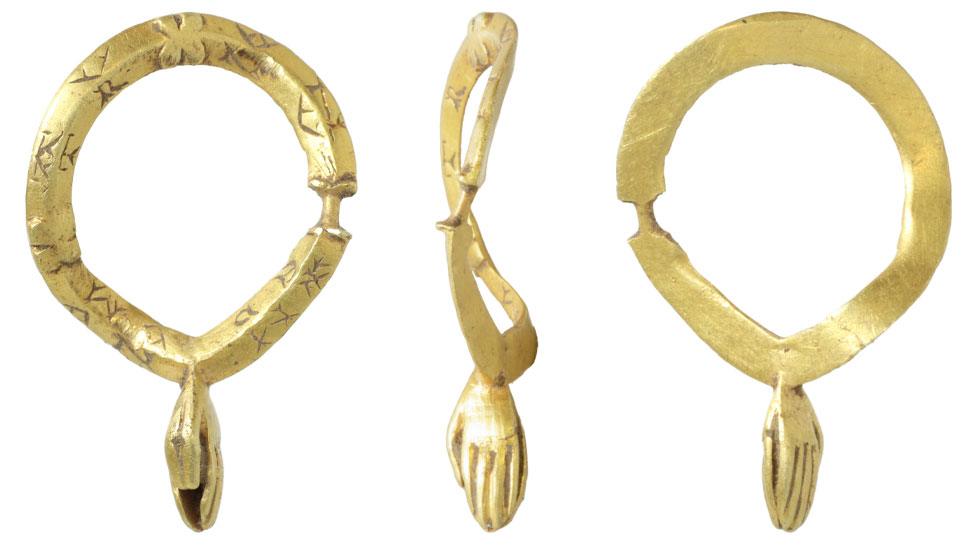
- Published20 November 2023
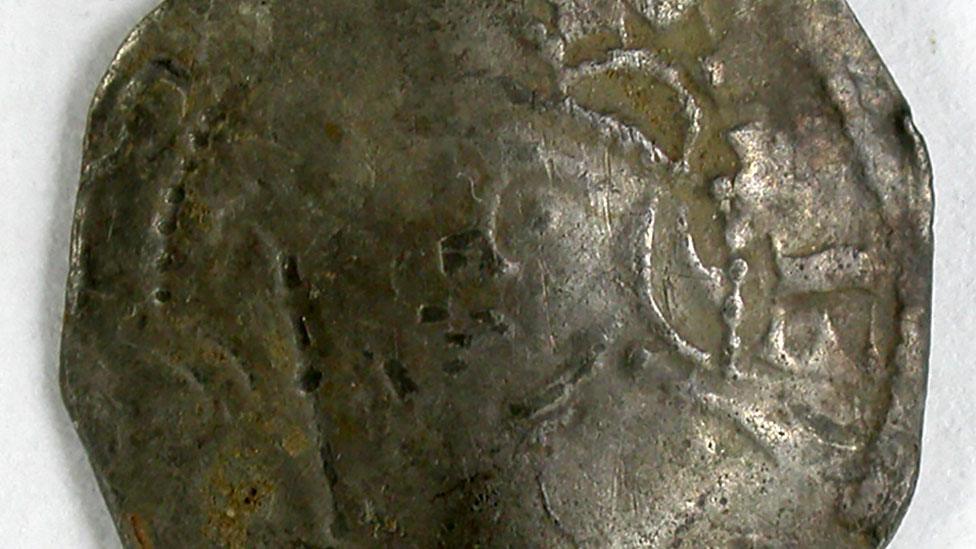
- Published19 November 2023
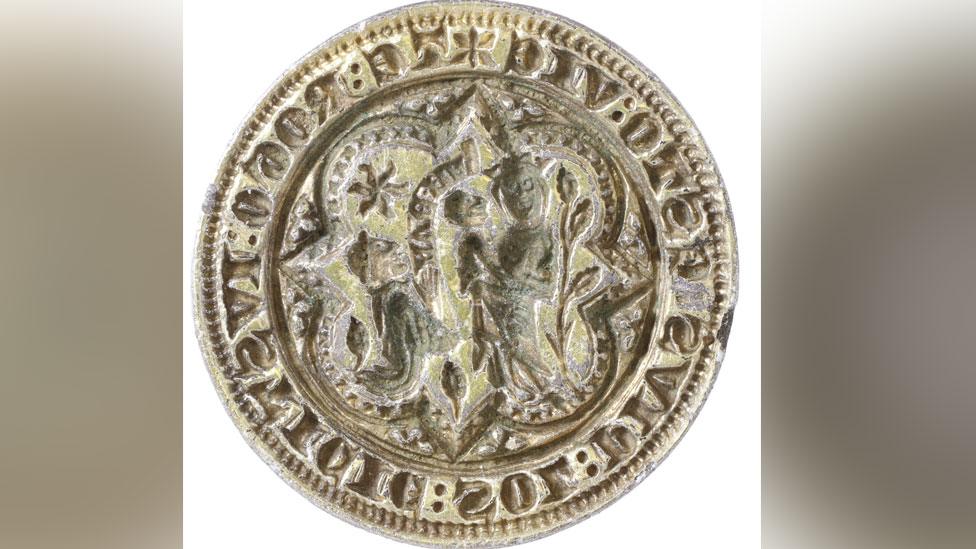
- Published19 September 2020
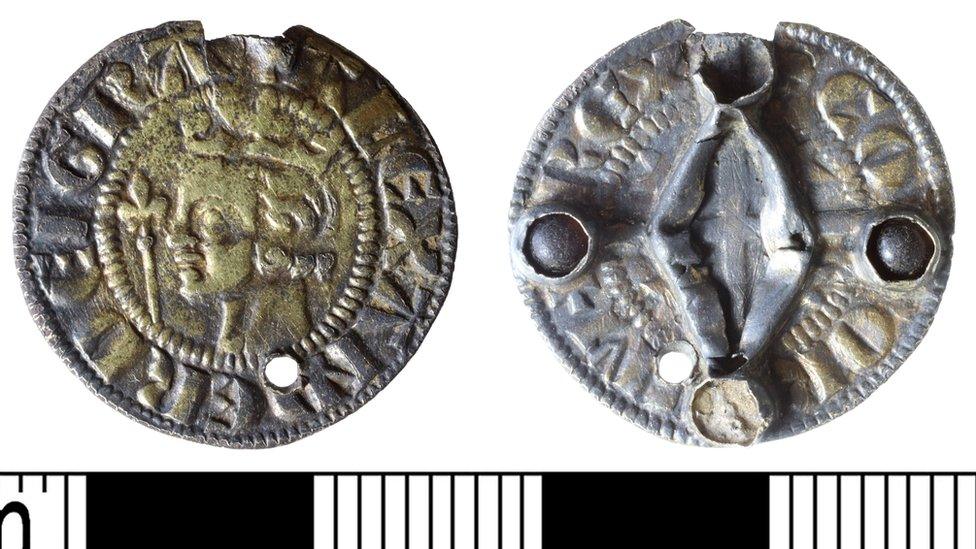
- Published4 April 2021
